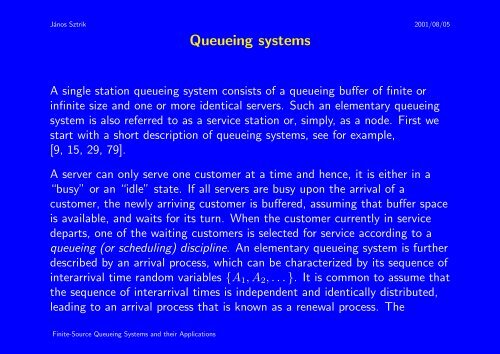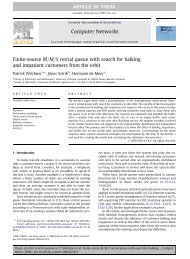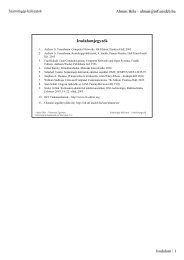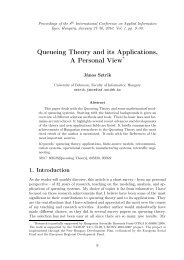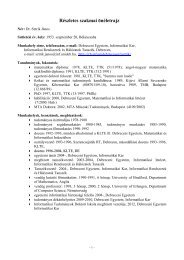Finite-Source Queueing Systems and their Applications
Finite-Source Queueing Systems and their Applications
Finite-Source Queueing Systems and their Applications
You also want an ePaper? Increase the reach of your titles
YUMPU automatically turns print PDFs into web optimized ePapers that Google loves.
János Sztrik 2001/08/05<br />
<strong>Queueing</strong> systems<br />
A single station queueing system consists of a queueing buffer of finite or<br />
infinite size <strong>and</strong> one or more identical servers. Such an elementary queueing<br />
system is also referred to as a service station or, simply, as a node. First we<br />
start with a short description of queueing systems, see for example,<br />
[9, 15, 29, 79].<br />
A server can only serve one customer at a time <strong>and</strong> hence, it is either in a<br />
“busy” or an “idle” state. If all servers are busy upon the arrival of a<br />
customer, the newly arriving customer is buffered, assuming that buffer space<br />
is available, <strong>and</strong> waits for its turn. When the customer currently in service<br />
departs, one of the waiting customers is selected for service according to a<br />
queueing (or scheduling) discipline. An elementary queueing system is further<br />
described by an arrival process, which can be characterized by its sequence of<br />
interarrival time r<strong>and</strong>om variables {A1, A2, . . . }. It is common to assume that<br />
the sequence of interarrival times is independent <strong>and</strong> identically distributed,<br />
leading to an arrival process that is known as a renewal process. The<br />
<strong>Finite</strong>-<strong>Source</strong> <strong>Queueing</strong> <strong>Systems</strong> <strong>and</strong> <strong>their</strong> <strong>Applications</strong>


